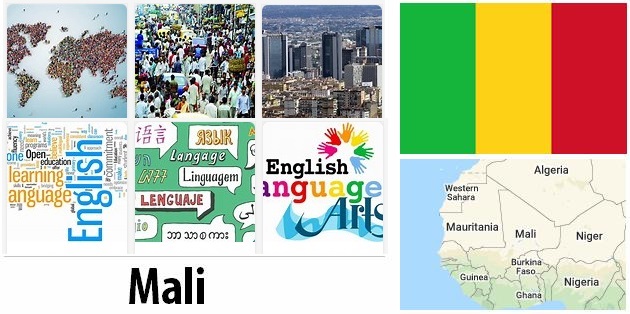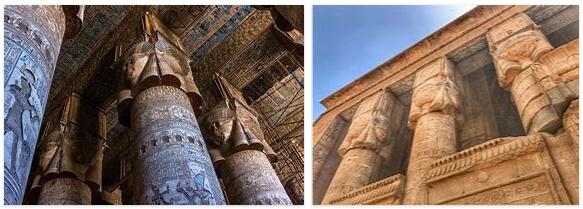Sudan in the 1950’s
From 1 January 1956 the Sudan became an independent republic (official name: Jamhuryat es – Sudan); thus ended the Anglo-Egyptian condominium, which had been established in the country in 1899 (see below). The parliament is made up of 97 deputies. The power of head of state rests with the president of ministers.
Khartoum, the capital and focal center of the whole country, appears today as a true modern city, at the confluence of the White Nile with the Blue Nile; it now forms a single urban complex (245,736 residents) with Omdurman, the largest nucleus, and North Khartoum. A sharp contrast can be seen between Omdurman, an African city par excellence although it represents an important market, and Khartoum. The growing importance of Port Sudan (47,562 residents) Lies in the fact that 80% of foreign trade passes through its modern port facilities. The coast near Port Sudan is characterized by magnificent underwater coral reefs, which represent a great tourist attraction.
The Sudan owes its current state of well-being to two major works: the construction in 1906 of the Port Sudan railway, which makes exports much easier by avoiding the long journey through Egypt, and the construction of a large and an extensive network of irrigation canals for the cultivation of long-fiber cotton, especially in the Gezira, but also in the internal delta areas of the Gash and the Baraba. It is the great Sennar dam that made the region between the White Nile and the Blue Nile extremely productive, that is the Gezira, which previously, due to the scarcity of rainfall, could only give an occasional hard production. Cotton, which is its most important product, especially for export purposes, is in rotation with the millet (hard) and a fodder, the lobia. This large cotton area, which until 1950 was in concession to the Sudan Plantations Syndicate and to the Kassala Cotton Co., today constitutes a partnership between the government, the aforementioned Sudanese union and the growers themselves. Fiber production exceeds 1 million q (1.3). Also important is the production of oil seeds, both cotton and sesame and peanut, which are widely exported.
In non-irrigated regions, where rainfall reaches 500-600 mm, the mechanized and extensive production of cereals promises rapid developments and it is in these regions that American cotton can also be grown. Finally, rice cultivation is increasingly extending along the White Nile. Sudan is still the most important producer of gum arabic.
The economic development of the country is also related to the further increase of the railway network: in 1954 the railway that runs from Khartoum along the Blue Nile almost to the Ethiopian border (er-Roseires), where a dam is being planned, was extended. The construction, in 1962, of a direct line from Khartoum to el-Manaqil in Gezira is also planned.
Finances. – The state budget of the republic of the Sudan normally shows a deficit, ranging from 1.6 million Sudanese pounds in 1953 to 16.7 in 1958; the deficit of the last year is the result of 43 million in receipts, of which 10 coming from agricultural enterprises and 18 from customs duties, and 60 million in expenses, of which 22 consisting of expenditure for productive investments. The goods and services balance of the balance of payments, after having been active for 51 million US dollars at the end of 1956, was negative for 61 million at the end of 1957 and became active again for 42 million dollars in 1959. In 1960 there was a loss of only 2 million.
The credit organization consisting of branches of the National Bank of Egypt, Barclays Bank, Ottoman Bank, Crédit Lyonnais, Bank Misr, Arab Bank and State Bank of Ethiopia, was strengthened in 1956 with the creation of a bank for special credit (the Agricultural Credit Bank of the Sudan) which accepts sight and term deposits and grants short, medium and long-term loans. In February 1960 the Central Bank of the Sudan was established, with the task of issuing the currency. The country’s monetary unit is the Sudanese pound, which is equivalent to 1 British pound, or sc. and 6 pence; the exchange rate with the dollar is set at $ 2,872 per 1 pound.
History. – Rejected, under the pressure of nationalist opinion, by the Egyptian government, the Sidky-Bevin agreement of October 1946, which provided for a statute of self-government and the right of self-determination of the Sudanese people, the British government continued, with the ” Sudanization Ordinance “of 19 June 1948, its program of encouragement to the autonomous political forces of Sudan. The negotiations between London and Cairo were resumed in 1950, but suffered a further interruption following the denunciation by the Egyptians, on 8 October 1951, of the two conventions of 1899 relating to the Anglo-Egyptian condominium on Sudan. Within the Sudan, the Egyptian thesis of the unity of the Nile valley and the union of the Sudan with Egypt was supported by the Ashigga Party headed by Ismail el-Azhari, while the Umma Party,
A draft constitution, approved by the Sudanese Legislative Assembly in April 1952, was submitted on 8 May by the governor of the Sudan to Great Britain and Egypt. The project opened up a long discussion between the interested parties, which resulted in a compromise: the Anglo-Egyptian convention of February 12, 1953 recognized the right of self-determination of the Sudanese people and provided for the gradual passage of the Sudan from self-government to complete autonomy for by means of a series of successive acts ranging from general elections to the formation of a government composed exclusively of Sudanese and the definitive constitution by a constituent assembly. While London and Cairo continued to argue about interpretation of the agreements and to accuse each other of interference and pressure on the Sudanese, the elections took place on November 2, 1953, from which the National Unionist Party (Ashigga) in favor of the union of the Sudan with Egypt emerged victorious. The Parliament was inaugurated on January 1, 1954; his work took place in the midst of constant incidents between separatists and pro-Egyptians. The too heavy interference of Egypt, however, contributed to gradually ease the situation, with the evolution of el-Azhari and his movement towards the independence of the Sudan and the refusal of union with Egypt. Of pro-Egyptian orientation, only the political groups representing the south of the South remained, mostly out of a desire to affirm their individuality with respect to the north. In the internal clarification, el-Azhari’s initiative to have the constitutional problem resolved instead of the planned Constituent Assembly by the parliament in function could have succeeded. This December 19, 1955 approved the declaration of independence, to come into force on January 1, 1956. The decision was accepted by the two condominium states.
The life of the new state began in a very agitated political atmosphere in which the Unionist Party that had been the protagonist of the independence struggle quickly wore out and a new majority was formed with the Umma Party and the new People’s Democratic Party, which on 7 July 1956 he assumed power under the presidency of Abdullah Khalil and was confirmed by the general elections of 27 February-10 March 1958. Moreover, the clash of programs between the parties in bitter forms, revived by the tension with Egypt for the problem of the waters of the Nile and the growing stiffening of the southern populations. Military circles drew inspiration from the atmosphere of internal unease to carry out a coup d’etat on November 17, 1958, forming a government outside the parties headed by gen.



